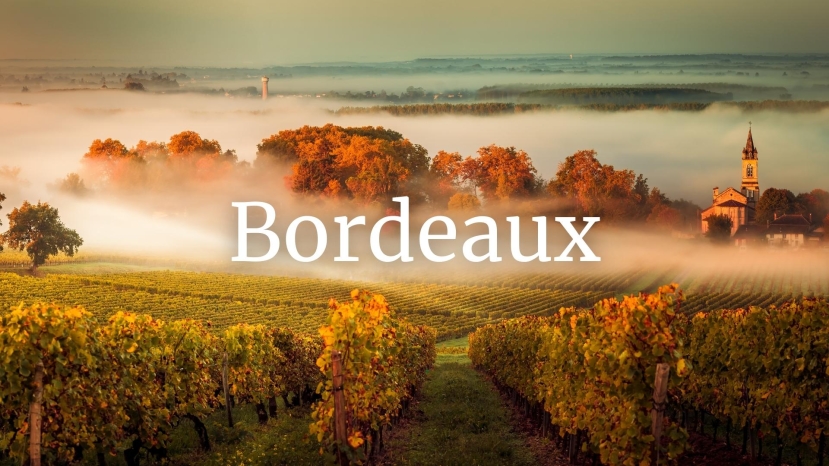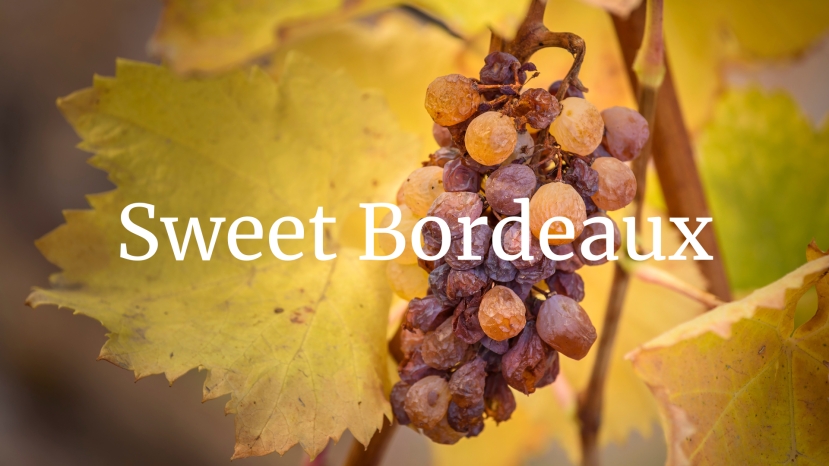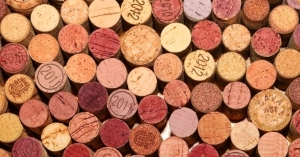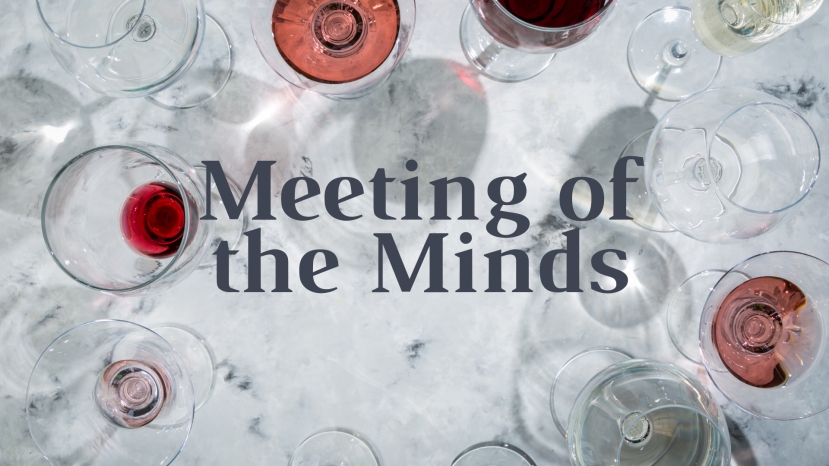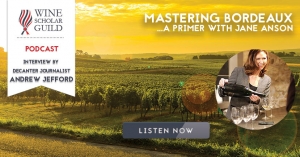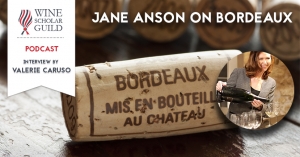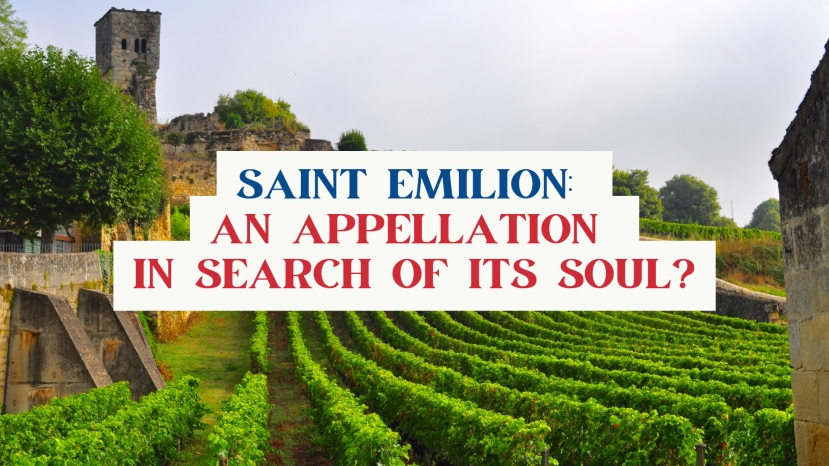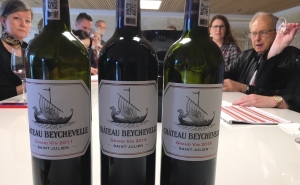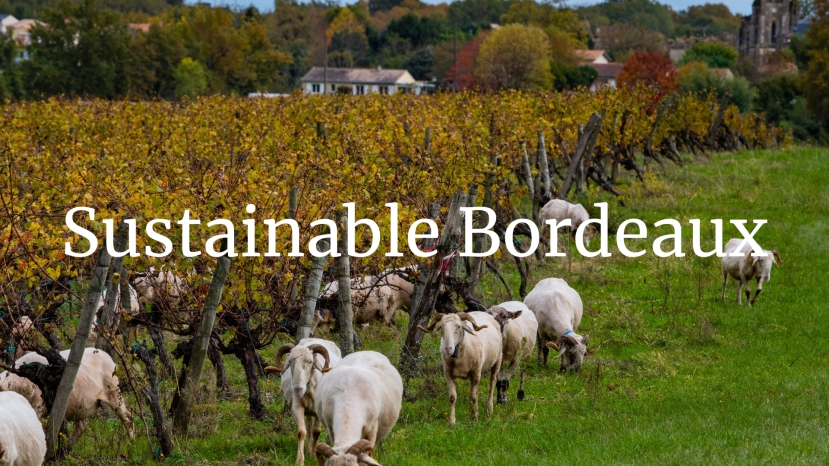BLOG
Bordeaux
1) Bordeaux is France’s largest quality wine region and largest producer of AOC wine.2) The quality of its vintages drives the fine wine market globally. 3) Bordeaux’s rich history, commercial significance, mercantile mindset, size, and quality set it apart from other French wine regions.
Summary:
Join us for the latest in our ever-popular 'Beyond the Basics' series. From Ice Wine to Botrytis, Passerillage Pantelleria, there is a plethora of different styles and methods involved in producing these heavenly nectars. We are delighted to welcome back Nova Cadamatre MW to lead this session for a deep-dive into the processes and potential pitfalls involved in making great dessert wines.
About the Speaker:
A winemaker with a broad and diverse
Summary
In this month's Beyond the Textbook webinar, we'll joined by the wonderful Wendy Narby who will take us on a journey down the Left Bank of Bordeaux and explore all the region's latest trends and developments. In this session we'll learn:
Médoc: Key figures and stats
Over-looked appellations: Listrac, Moulis and Medoc
Appellation Médoc
White Médoc: new for 2025
The surprising role of
Summary:
In this video we taste three exquisite examples of Semillon/Sémillon from France and Australia, each with a really nice bit of bottle age. Justin recaps some of the textbook knowledge about this grape variety, as well as the key winemaking and viticultural factors that give the wines their unique personalities. We also cover some blind tasting tips about how you might tell these wines apart from other similarly styled examples from around the
Lonely Planet has released their Best in Travel 2017 guide about THE places to visit in the next year…and Bordeaux tops their list as the No. 1 city destination in the world!
{youtube}GfyqZxpfdFc{/youtube}
Bordeaux contains more preserved historical buildings – such as Place de la Bourse – than any city in France aside from Paris © Justin Foulkes / Lonely Planet
Summary:
The allure and legacy of Bordeaux is legend. It has enjoyed centuries of success, not only because of a gifted terroir but also because of the uncanny business sense of its producers.
Never resting on its laurels, the region has maintained its spotlight within the world of wine and established itself as cutting-edge and avante garde within the realm of viti/vini research
Summary:
With more than 100,000 hectares, Bordeaux is the largest wine-growing region in the world, but today it is desperately out of fashion. Bordeaux “bashing”, climate change and a decline in global wine consumption are putting the world's most famous wine region at risk. While a few prestigious Grand Crus retain their appeal, the industry is facing a crisis akin to the phylloxera outbreak. But solutions do exist.
In this presentation, we will take an in-depth look at
Anyone who has been to Bordeaux is familiar with this signature sweet. It almost defies description: a rich popover dough with a custardy interior, coated in a dark, thin, crispy caramel. It is love at first bite and the souvenir shops know this. They sell the molds. But buyer beware…insiders swear that the authentic versions can only be achieved by copper forms.
Summary:
Beyond Sauternes and Barsac there are eight AOPs for Sweet Bordeaux that frame the Garonne river. Although these AOPs are neighbors, their climatic and geologic nuances result in a complex range of expressions and wine styles from Semillon, Sauvignon, and Muscadelle.
Deborah will be presenting the following wines/AOPs geographically starting with the Moelleux which can be
Summary
Whatever happened to the Chinese market and Bordeaux? Going back 15 years or so it was all we seemed to hear about, but in the past few years seems to have dropped out of the news cycle. Does China still maintain the same level of influence in Bordeaux? Or has the Chinese consumer moved on to other things? How does domestic production compete with these prestigious foreign imports? We catch up with Tina Xie, Bordeaux resident and Chinese national to find
Summary
Justin catches up with Bordeaux expert and resident Wendy Narby to discuss the ways the region is reinventing itself past the traditional Cabernet/Merlot blends that have made it so famous. Learn how producers are pushing the boundaries of our expectations in Bordeaux, in a quest to stay relevant to a new generation of enthused wine drinkers seeking quality, value and authenticity.
Find out more about our Backroads Bordeaux trip
Summary
Sweet Bordeaux wines are undoubtedly some of the finest in the world, but have been chronically unfashionable for a really long time. In this interview we catch up with Wendy Narby who sheds some light on what the future holds for these outstanding wines, and the innovative ways in which producers are evolving their business models to ensure their survival and how they are thriving into the future.
About the
Let's face it: Bordeaux is struggling. A recurring theme during my latest visit was producers lamenting declining sales, despite their wines tasting rather delicious. In January, the Gironde Chamber of Agriculture reported that more than 1,320 winegrowers were facing financial challenges – a situation that prompted the agriculture ministry to allocate €57 million to support the uprooting of nearly 10,000 hectares of vines in the region.
Every wine appellation in France has a cahier des charges, a set of regulations that delineates the production zone and specifies viticultural practices and production standards.
In many instances, a single cahier des charges references one zone of production and multiple wine styles within it (e.g. Lirac red, white, and rosé; Rasteau dry red, plus red, white and rosé Vins Doux Naturels). Some single cahiers also incorporate complementary geographic denominations or dénominations géographiques complémentaires (DGCs) such as Languedoc Montpeyroux or Bourgogne Hautes Côte de Nuits. Other times, very different wines can be grouped under one single cahier as is the case for Beaujolais, Beaujolais Supérieur, Beaujolais + Named Commune, and Beaujolais-Villages.
Summary:
Bordeaux may serve as a general model for fine-wine regions worldwide, but one Bordeaux institution is little imitated elsewhere: its property classifications.
How and why did these come into being?
How do they differ from one another?
Is it better to leave an original classification unchanged since inception, as the 1855 classification of the
Mastering Bordeaux, a primer with Jane Anson and Andrew Jefford of Decanter Magazine.
Award-winning author and Decanter Magazine columnist Jane Anson draws us deeper into the Bordeaux conversation and reveals what she discovered while working on her massive new book project, Inside Bordeaux, and what to expect when the book is launched in Spring 2020.
Summary:
To some observers, Saint Emilion is the epicentre of the qualitative and stylistic revolution in Bordeaux, bursting with courageous and dedicated artisanal wine estates pushing the boundaries, regardless of tradition and hierarchy. To others, Saint Emilion has become a byword for the worst excesses of hubris and greed in a region already well known for them.
In this webinar,
Assisting trip instructor Gerard Basset MW, MS, our Tour Manager Sarah Beck-Graham reports daily on the learnings and encounters on our 2017 Bordeaux wine study trip taking place October 1st through 6th 2017.
Sarah lives in Bordeaux and has 15 years of experience in the Bordeaux wine industry. She has been manager of a top Right Bank chateau and worked for several top Bordeaux wine merchants. She now guides wine tours in the region and handles logistics for wine-related events.
Summary:
The city of Bordeaux has recently been governed by a green mayor, more than 14,000 hectares of vineyards are certified organic or are being converted, and biodynamics is experiencing great popularity.In the Gironde region, too, it has been realized, not least after various pesticide scandals, that neither people nor the environment can be poisoned for a luxury product like wine. In this webinar, we want to get to the bottom of the efforts for more
Page 1 of 2
- 1
- 2





